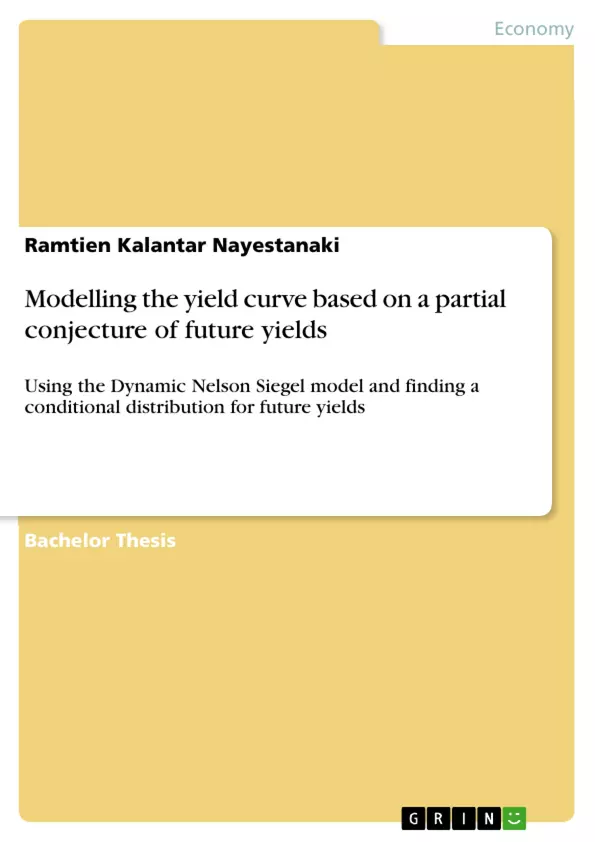The reader is introduced to term structure modelling using the Dynamic Nelson-Siegel model. Assuming an independent and correlated specification for its factors, we estimate the factor dynamics by maximum likelihood. Additionally, estimation of the factors is done by Kalman filtering. We derive a closed-form distribution for future factors, forecast them and present the insample and out-of-sample forecasts. As a useful addition, we discuss the main finding of the thesis, namely a stochastic model for the predicted yield curve, when a future yield with certain maturity is given.
Frequently asked questions about "Modelling the yield curve based on a partial conjecture of future yields"
What is the Dynamic Nelson-Siegel model?
The Dynamic Nelson-Siegel (DNS) model is a statistical model used for modeling and forecasting the term structure of interest rates, which is the relationship between bond yields and their maturities. It extends the static Nelson-Siegel model to a dynamic framework where the factors (level, slope, curvature) are assumed to be time-variant.
What are the key themes explored in this study?
This study explores term structure modeling using the Dynamic Nelson-Siegel model, factor dynamics estimation using maximum likelihood and Kalman filtering, forecasting future yield curves, and developing a stochastic model for predicting yield curves based on a partial conjecture of future yields.
What is the primary dataset used in the analysis?
The primary dataset consists of zero-coupon German Bund yields obtained from Bloomberg, spanning from January 2, 1998, to March 9, 2016.
What is the significance of the level, slope, and curvature factors in the DNS model?
In the DNS model, the level factor represents the overall level of interest rates, the slope factor represents the difference between short-term and long-term rates, and the curvature factor captures the bend or curve in the yield curve.
What statistical methods are employed in this study?
The study utilizes Ordinary Least Squares (OLS) regression, Maximum Likelihood Estimation (MLE), Kalman Filtering, and Vector Autoregressive (VAR) models to analyze and forecast yield curves.
What is the Kalman Filter and how is it used in this study?
The Kalman Filter is a recursive algorithm used to estimate the state variables of a dynamic system from a series of incomplete and noisy measurements. In this study, it's used to estimate the factors of the Dynamic Nelson-Siegel model.
What is iDNS and cDNS, and how are they different?
iDNS refers to the independent Dynamic Nelson-Siegel model, which assumes the factors (level, slope, and curvature) are independent of each other. cDNS refers to the correlated Dynamic Nelson-Siegel model, which relaxes this assumption and allows the factors to be correlated.
What evaluation metrics are used in this study?
The Root Mean Squared Error (RMSE) is used as the primary metric for evaluating the accuracy of yield curve forecasts.
What does this paper find regarding iDNS and cDNS performance?
The cDNS model performs better in out-of-sample forecasting, possibly because it models the correlation environment of the factors, but the iDNS model does better in in-sample forecasting.
What are the main findings regarding modelling predicted yield curves with future yields?
A stochastic model for the predicted yield curve can be created when a future yield with a certain maturity is known.
- Quote paper
- Ramtien Kalantar Nayestanaki (Author), 2016, Modelling the yield curve based on a partial conjecture of future yields, Munich, GRIN Verlag, https://www.grin.com/document/352069



